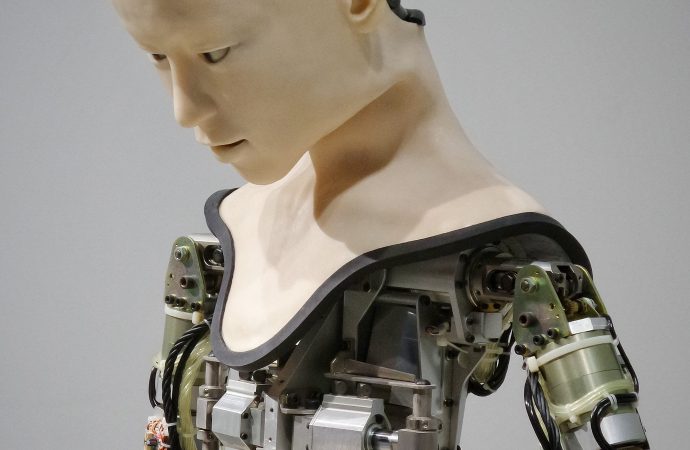Introduction Artificial Intelligence (AI) has made remarkable progress in recent years, from recognizing faces to playing complex games like chess and Go. But can machines truly comprehend the nuances of human understanding? Can they understand emotions, sarcasm, or irony? In this blog post, we delve into the limits of machine knowledge and explore whether AI
Introduction
Artificial Intelligence (AI) has made remarkable progress in recent years, from recognizing faces to playing complex games like chess and Go. But can machines truly comprehend the nuances of human understanding? Can they understand emotions, sarcasm, or irony? In this blog post, we delve into the limits of machine knowledge and explore whether AI can ever truly understand human understanding. Join us on this thought-provoking journey into the world of AI and its relationship with humanity!
What is Machine Learning?
Machine learning is a subset of artificial intelligence that aims to make machines learn from data. It has been used in a wide range of applications, such as spam filtering and natural language processing. Machine learning has always been criticized for its incapability to understand human understanding. However, recent advances in deep learning have shown that machine learning can surpass human performance in certain tasks, such as recognizing objects and interpreting text.
Deep learning is a type of machine learning that uses artificial neural networks (ANNs). ANNs are composed of many layers of neurons, each with a specific function. The first layer takes in raw input data and passes it on to the next layer which does some sort of preprocessing on it, like Normalizing the data or converting it from one format to another. After that, the hidden layers are activated and pass the processed data on to the output layer which outputs the final result.
One big advantage of deep learning is its ability to learn complex patterns very quickly. This makes it well-suited for tasks such as object recognition and textual interpretation where there are many possible interpretations. Another advantage is that deep learning can be adapted to work with any kind of data, not just classical linear regression models which are typically used for machine learning problems.
How Does Machine Learning Work?
Machine learning is a subset of artificial intelligence (AI) that relies on computers to learn from data without being explicitly programmed. It has proved to be an extremely powerful tool for automating tasks and predicting outcomes, but there are still some areas where it falls short of human understanding. For example, machine learning can’t understand when something is sarcasm or satire, and it struggles with complex concepts such as irony.
Despite these limitations, machine learning is still making significant progress in many domains. For example, it’s been used to develop sophisticated health monitoring systems and predict consumer behaviour. In the future, we may see more AI applications that rely on machine learning to achieve greater understanding of human behaviour. However, we’ll need to continue developing ways to test and improve the algorithms so that they can effectively tackle complexities beyond what a computer can currently do.
Types of AI
AI comes in many types, each with its own strengths and weaknesses. Some AI systems are designed to learn from data alone, while others require human feedback in order to improve. Some AI systems are able to understand natural language, while others are not. For some tasks, one type of AI may be better than another.
Some experts believe that AI is capable of understanding human understanding, but this is still far from being proven. It is possible that certain AI systems are able to emulate certain aspects of human understanding, but it is also possible that these systems do not actually understand anything about human understanding.
How Close is AI to Understanding Human Understanding?
There are many ways to measure the extent to which AI understands human understanding, but one common way is to compare how well AI performs on various tasks that require understanding of human concepts, such as recognizing a cat picture or understanding a simple sentence.
Recent research has shown that while AI can achieve some level of success on these tasks, it is still far from being able to understand human understanding fully. For example, recent studies have shown that even when given large amounts of training data, AI still cannot reliably recognize objects or understand simple sentences.
One reason for this limitation may be that humans take advantage of their experience and knowledge when processing information. In contrast, computers are purely mechanistic in nature and do not seem to benefit from their past experiences the same way humans do. This lack of experience could make it difficult for computers to learn from examples and understand complex concepts. Additionally, it is still unclear how effectively computers can generalize learned information across different contexts or domains.
Conclusion
It is clear that machine learning has the potential to revolutionize many industries, but there are still some areas where human understanding is necessary. For example, it is difficult for a computer to understand what “fairness” means or why people might feel emotions like anger or jealousy. As machine learning advances, we may see more and more cases where machines achieve superior performance in certain tasks relative to humans, but fail to complete tasks that require a deeper understanding of human behavior. It will be interesting to see how this development unfolds and whether humans continue to play an important role in the Machine Intelligence field.

















Leave a Comment
Your email address will not be published. Required fields are marked with *